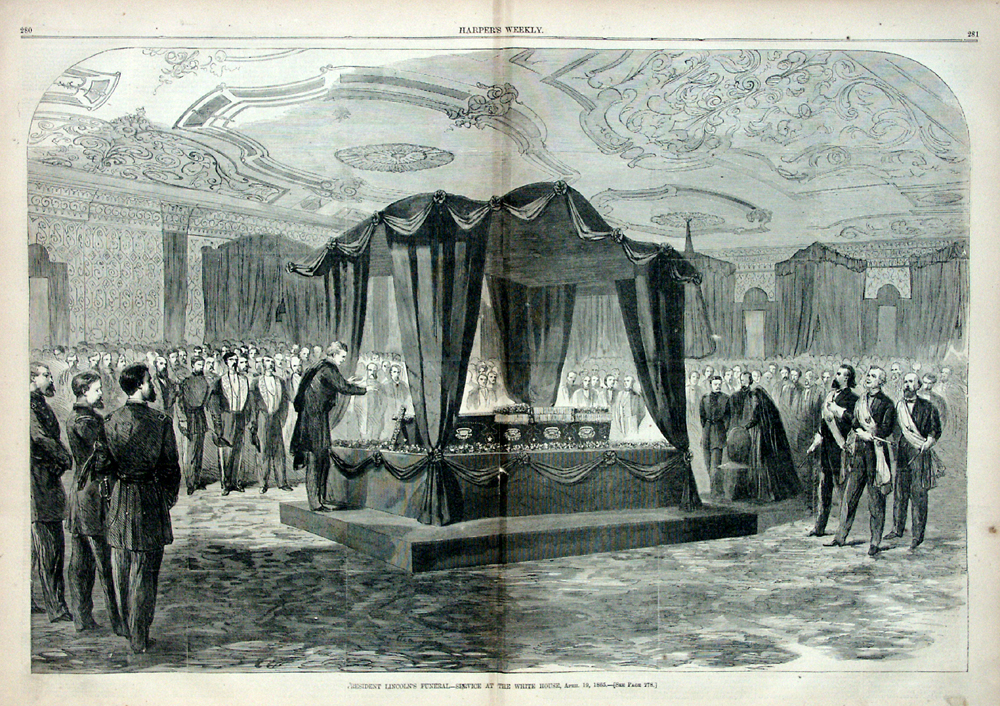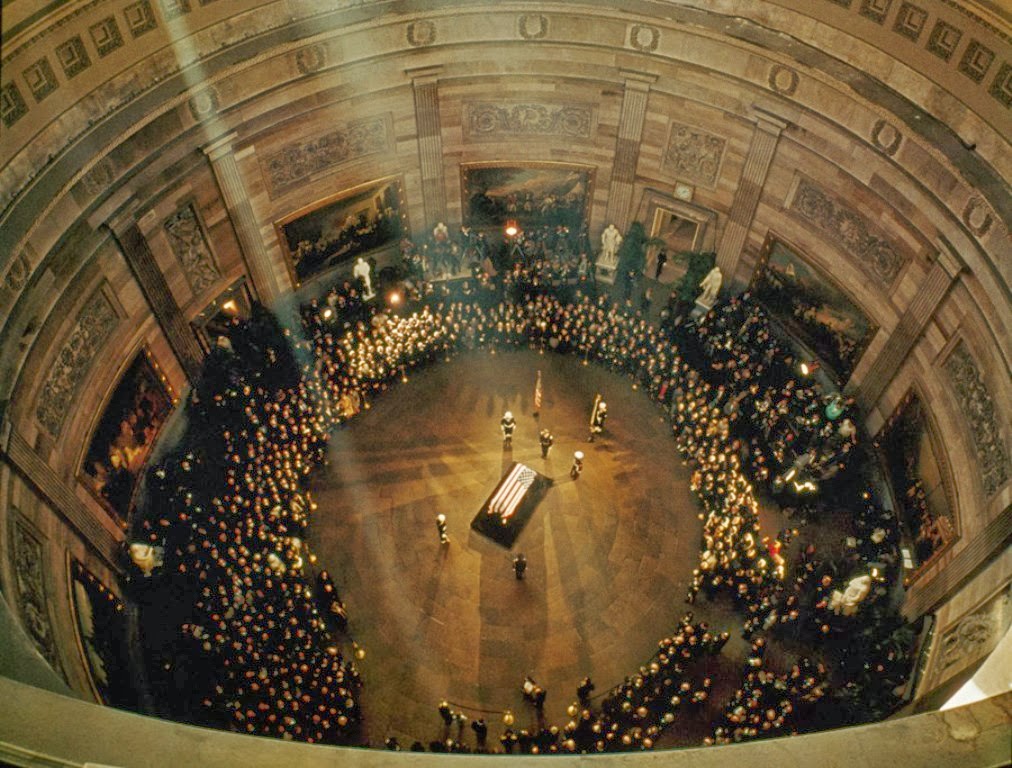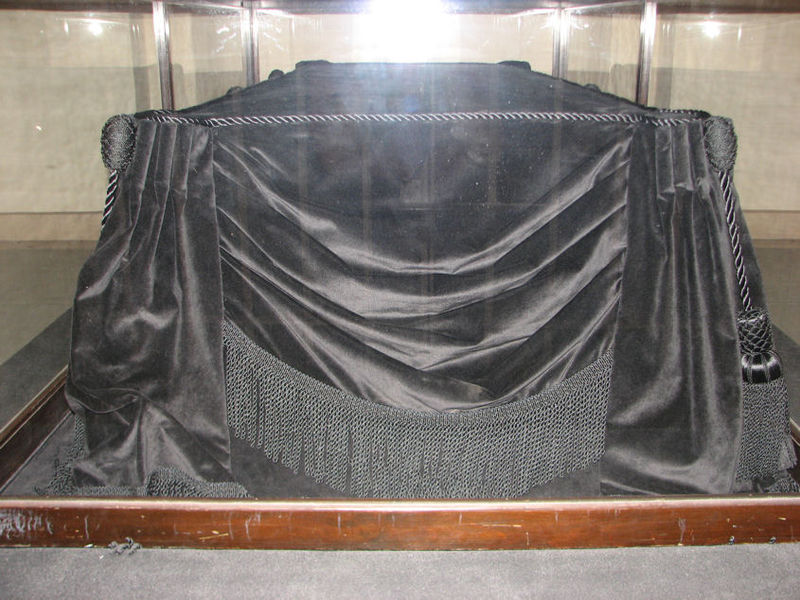
Friday, the remains of Senator John McCain of Arizona lay in state in the Rotunda of the United States Capitol. The media has told us that only 30 others have been so honored.
What does it mean to lie “in State”? There’s the obvious part that someone really important has died and the public is showing its respect for the life of the deceased by making a big show out of his or her death by publicly displaying the remains, draping the coffin with a flag and having members of the military stand guard while members of the public walk past.
But did you know (and I’ll bet you didn’t) that there are other ways we show our respect to those who have passed away, who have lived lives deemed worthy of a show of public respect? Yep. They’re called “Lying in Honor” and “Lying in Repose.” So, what’s the difference,” you ask?
Thank you for asking!
In the United States, when the deceased person is placed in a location other than the Rotunda of the United States Capitol, like the Great Hall of the Supreme Court, they lie in repose, as was the case following the death of Justice Antonin Scalia in February 2016.[2] For example:
- The body of Babe Ruth lay in repose in Yankee Stadium.
- The body of singer Israel Kamakawiwo’ole lay in repose in the state capital building of Hawaii in 1997.[3]
Supreme Court Justices “lie in repose” in the Great Hall of the United States Supreme Court Building.
- 1974 – Chief Justice Earl Warren
- 1993 – Justice Thurgood Marshall
- 1995 – Chief Justice Warren E. Burger
- 1997 – Justice William J. Brennan, Jr.
- 1999 – Justice Harry A. Blackmun
- 2005 – Chief Justice William H. Rehnquist, the first so-honored to have died in office.
- 2016 – Justice Antonin Scalia, died in office.
Not everyone eligible to lie in state in the Capitol Rotunda does so. For instance, the body of former President Richard Nixon lay in repose at the Richard Nixon Presidential Library in Yorba Linda, California, Senator Edward Kennedy‘s body lay in repose at the John F. Kennedy Library in Boston, Massachusetts, and Senator Robert Byrd‘s body lay in repose in the Senate chamber at the Capitol.[4]
Anyone not from government whose remains are put in public view in a government building is said to be lying in honor, accompanied by a Capitol Police guard.
The United States Congress has created a manner similar to Lying in State to honor distinguished Americans who do not qualify for a lying in state designation. In the process of “lying in honor,” the honor guard in the Rotunda is provided by the Capitol Police or another suitable source. [15][16]
Presidents generally lie in repose in the East Room of the White House before lying in state at the capitol.

Very few individuals have received this honor. They include:
- 1998 – United States Capitol Police Officer Jacob Chestnut and Detective John Gibson, killed on duty. Chestnut was the first African American to lie in honor.
- 2005 – Rosa Parks, civil rights activist. [12][13]Parks was the second African American and the first woman to lie in honor in the Capitol Rotunda.[12]
- 2018 – Billy Graham, Christian evangelist.[14] He was the first religious leader to be so honored.
Other notable individuals, several of them being the Chief Justice of the United States, have lain in state in the United States Supreme Court Building while other individuals such as Ronald H. Brown, have lain in state in the Herbert C. Hoover Building.[19]
And so I wondered, “Who are those others who have lain in state at the US Capitol Rotunda?”
Eleven have been presidents: Lincoln, Garfield, McKinley, Harding, Taft, Kennedy, Hoover, Eisenhower, Johnson, Reagan and Ford.
In case you were wondering also, here they are in chronological order, thanks to Wikipedia:
- 1852 – Henry Clay, long-serving Senator and Representative, Secretary of State, Speaker of the House, and three-time presidential candidate
- 1865 – President Abraham Lincoln, assassinated in office
- 1868 – Thaddeus Stevens, Representative from Pennsylvania
- 1874 – Charles Sumner, Senator from Massachusetts
- 1875 – Vice President Henry Wilson, served under Grant, died in office
- 1881 – President James Garfield, assassinated in office
- 1886 – John A. Logan, Senator from Illinois
- 1901 – President William McKinley, assassinated while in office
- 1909 – Pierre L’Enfant – although he died in 1825, his remains were disinterred; he was honored by lying in state before reinterment at Arlington National Cemetery
- 1917 – Admiral George Dewey, Admiral of the Navy
- 1921 – The Unknown Soldier for World War I
- 1923 – President Warren Harding, died in office
- 1930 – President William Howard Taft, President 1909–13, also Chief Justice 1921–30
- 1948 – John J. Pershing, General of the Armies of the United States during World War I and after
- 1953 – Robert A. Taft, U.S. Senator and Majority Leader
- 1958 – The Unknown Soldiers for World War II and the Korean War
- 1963 – President John F. Kennedy, assassinated in office
- 1964 – General Douglas MacArthur, General of the Army
- 1964 – President Herbert Hoover, serving 1929–33
- 1969 – President Dwight Eisenhower, President 1953–1961, Supreme Allied Commander during World War II
- 1969 – Everett Dirksen, Illinois Senator, Senate Minority Leader 1959–1969
- 1972 – J. Edgar Hoover, FBI Director 1929–1972
- 1973 – President Lyndon B. Johnson, President 1963–1969
- 1978 – Hubert Humphrey, Vice President 1965–1969, Minnesota Senator, 1968 Democratic nominee for President of the United States
- 1984 – The Unknown Soldier for the Vietnam War (later identified as 1st. Lt. Michael J. Blassie)
- 1989 – Claude Pepper, long-serving Senator and Representative from Florida
- 2004 – President Ronald Reagan, President 1981–1989
- 2006–07 – President Gerald Ford, President 1974–1977
- 2012 – Daniel Inouye, President pro tempore of the U.S. Senate, Senator from Hawaii, and recipient of the Medal of Honor[9][10]
- 2018 – John McCain, 2008 Republican nominee for President of the United States, Senator from Arizona, and recipient of the Silver Star.[11]
Oh, and what about that mysterious box draped in black fabric under the casket?
So there you have it! You may now converse eloquently with your friends at cocktail parties, over dinner, or on quiet walks about state funerals of all varieties. Aren’t you glad you asked! I am.


